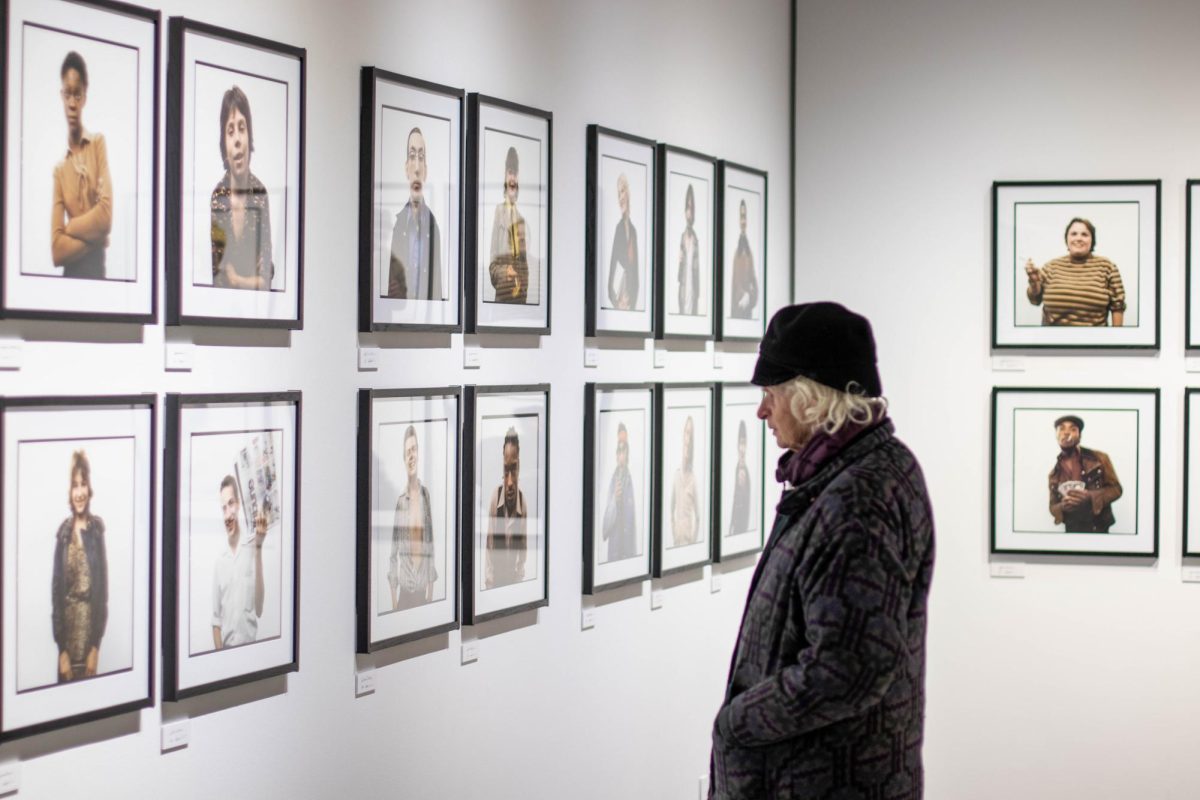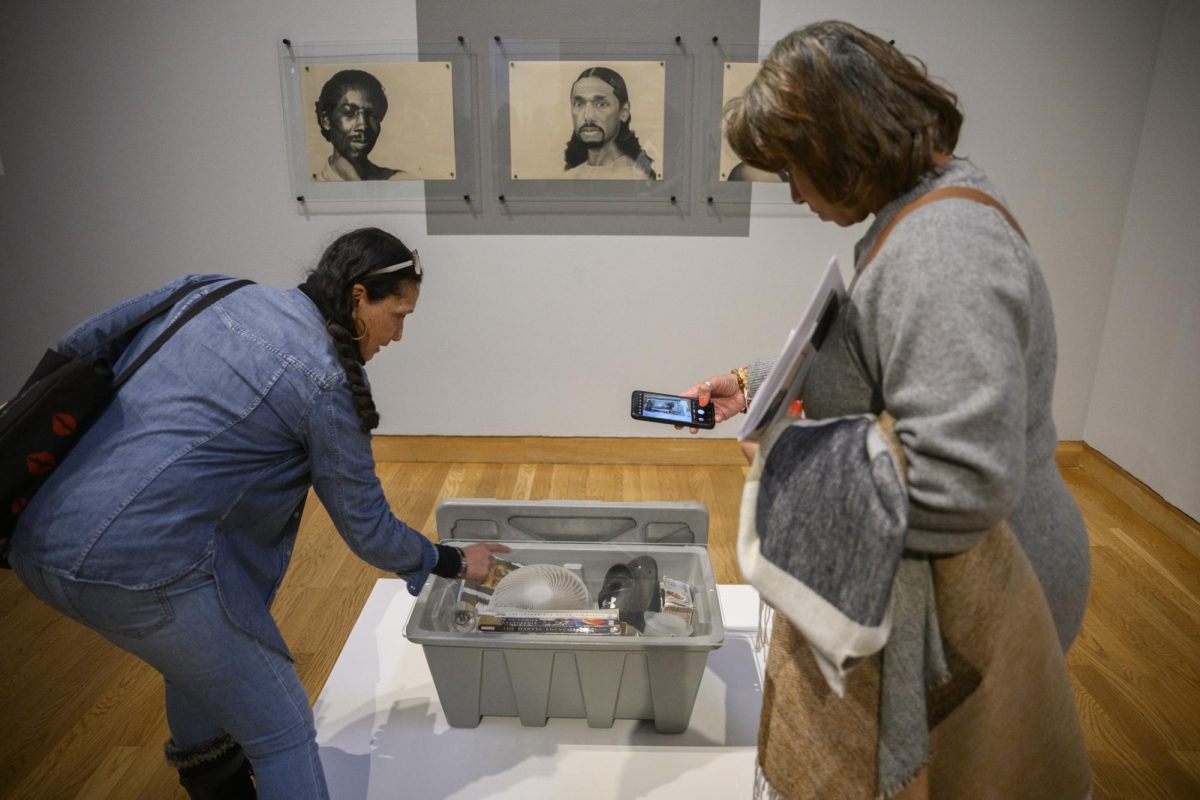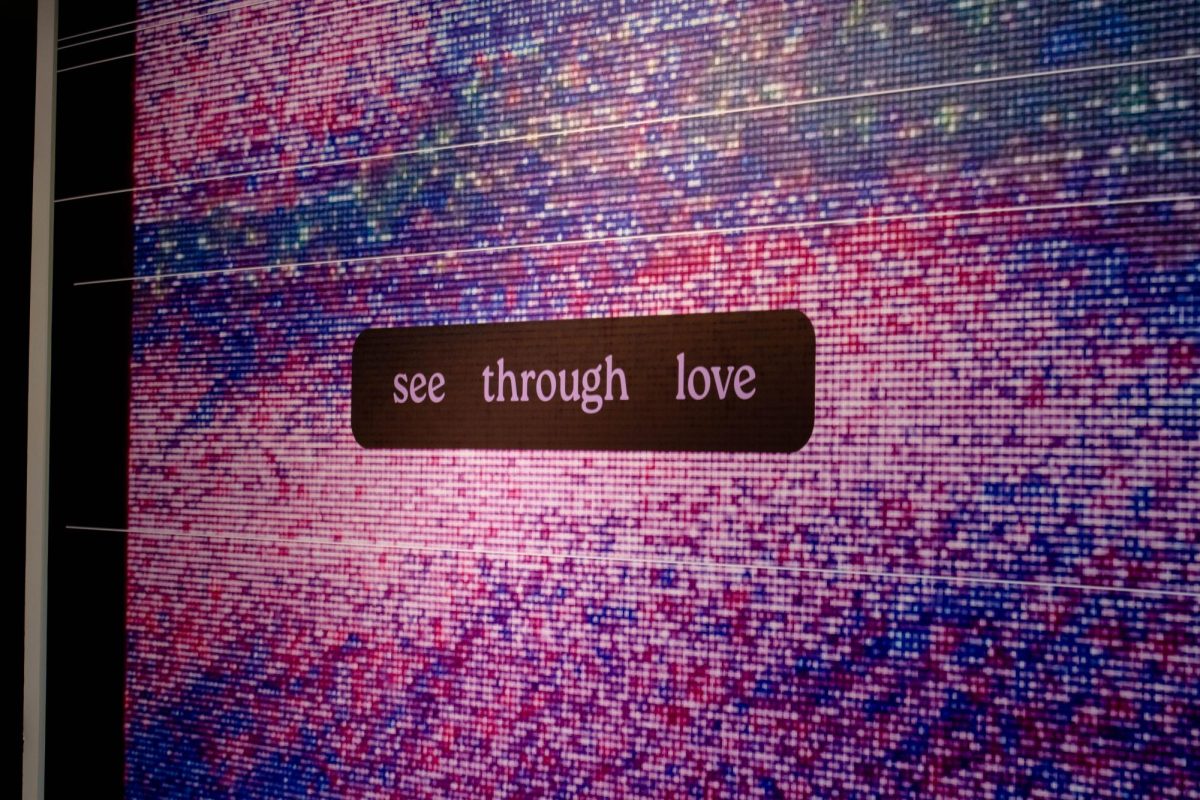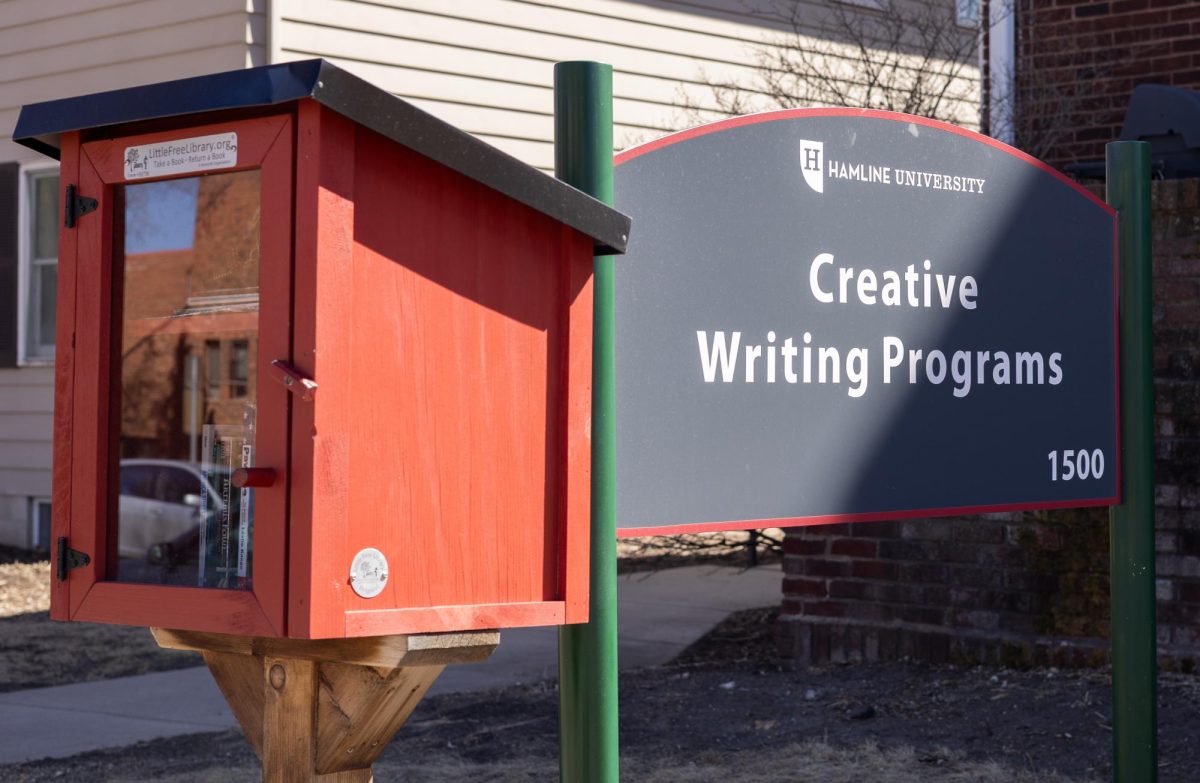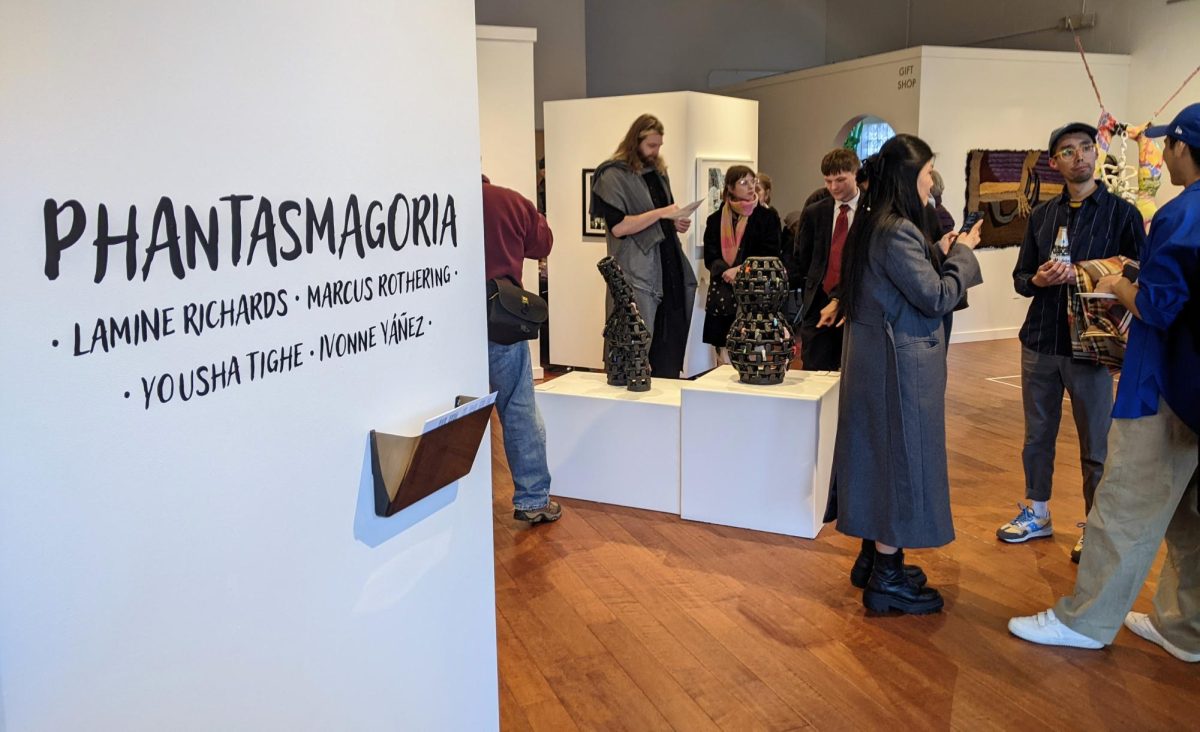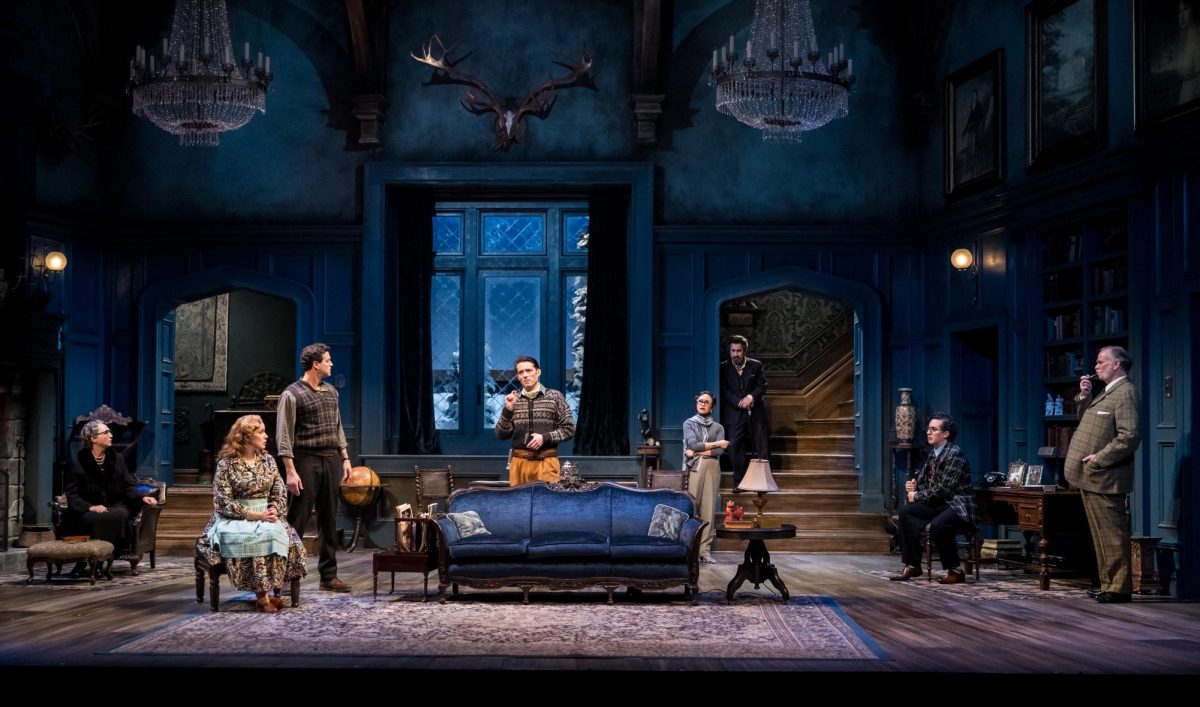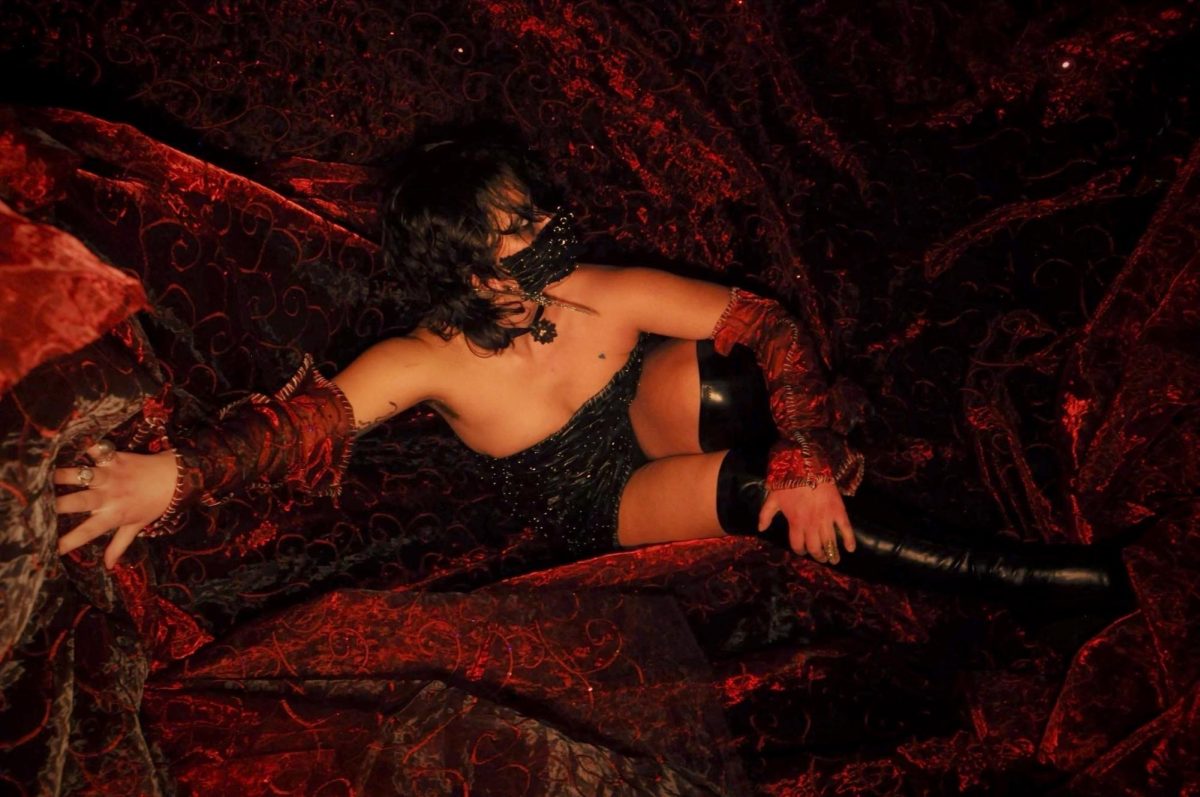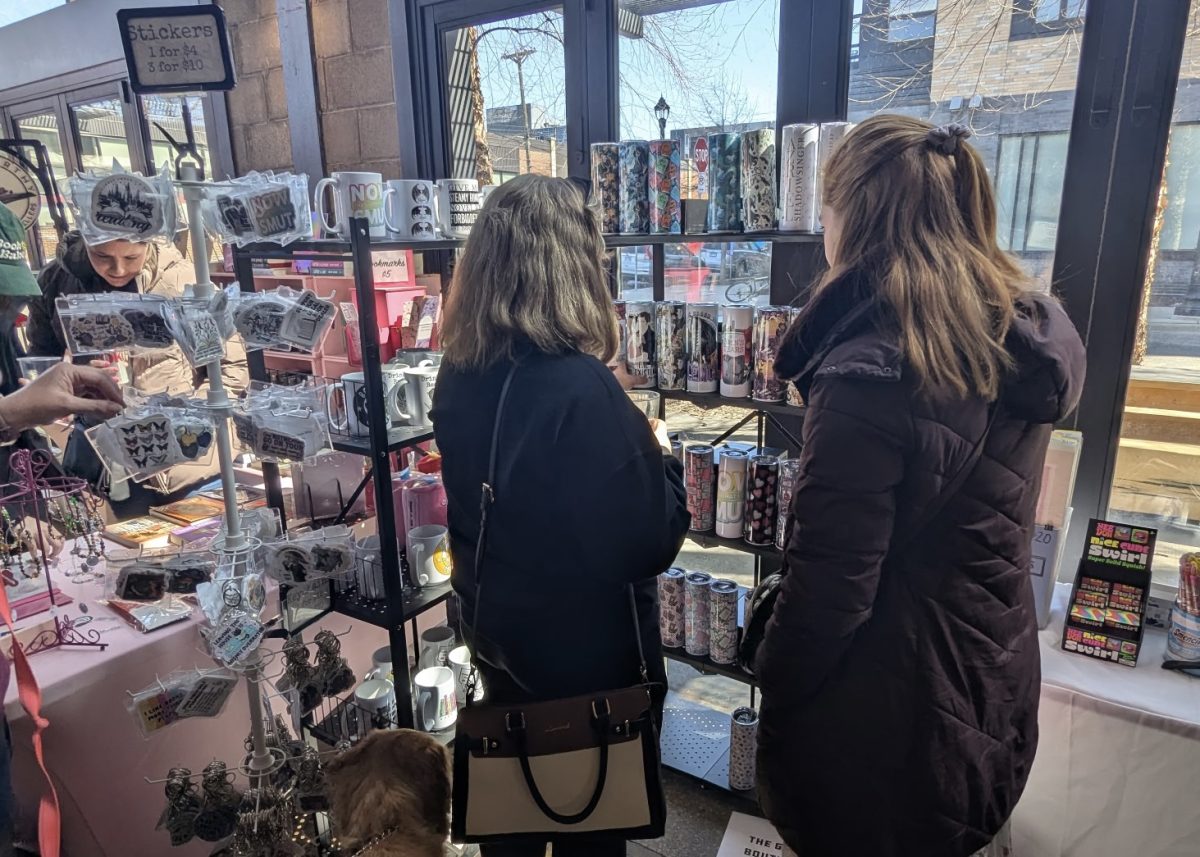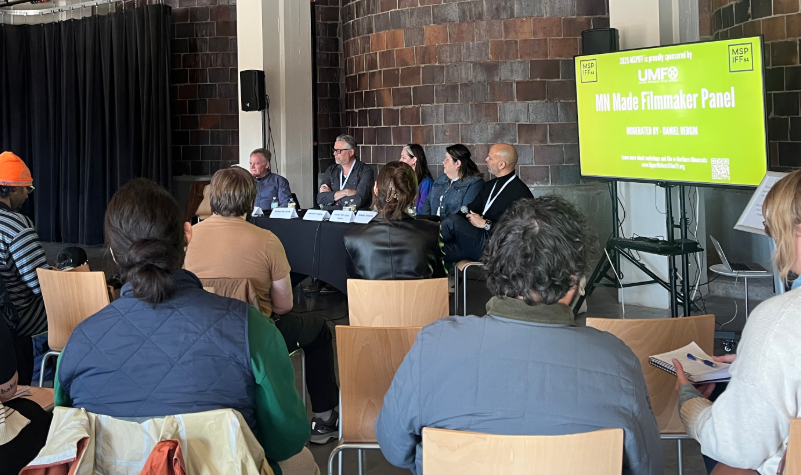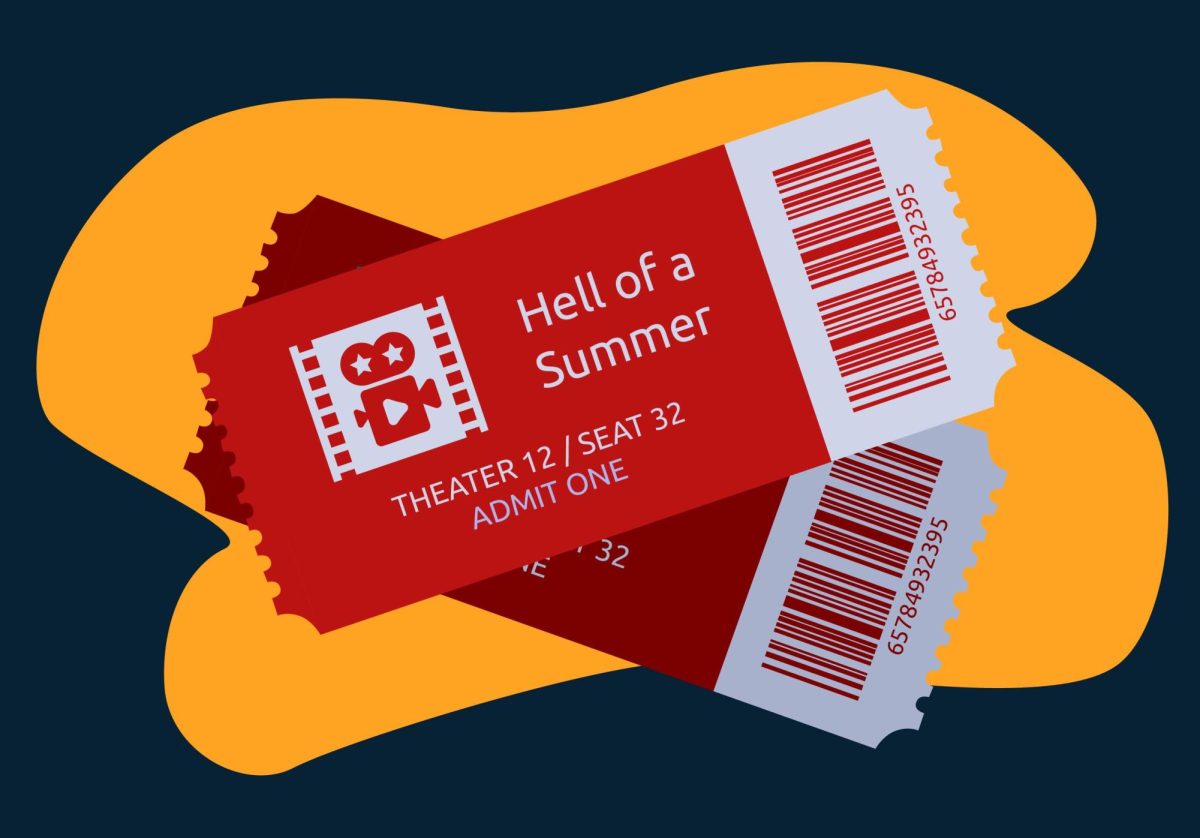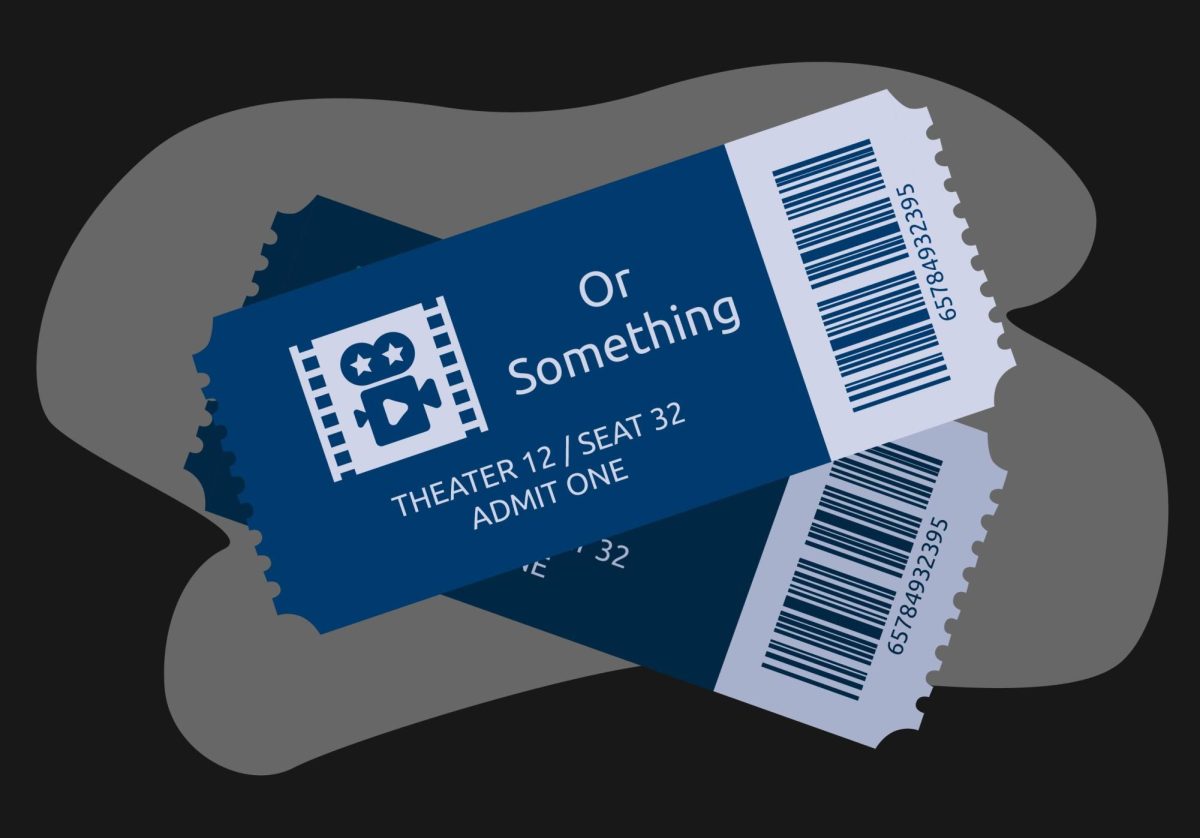Last Friday, visitors poured into the Katherine E. Nash Gallery to view works from University of Minnesota professor Paul Shambroom’s long and celebrated career.
Shambroom’s “American Photographs” include beautifully shot and composed photographs of landscapes, buildings, people and nuclear missiles. They are on display at the Regis Center for Art’s gallery until March 8.
Much of Shambroom’s work is centered around institutions like local governments and police forces, something he attributed to a life-long interest in politics and conflict.
“The work I do is kind of a coping mechanism,” he said.
Two of Shambroom’s most recent projects, “Purpletown” and “Past Time,” are being exhibited publicly for the first time. Both were inspired by the divisive 2016 and 2020 presidential elections.
“Purpletown” features photographs from over sixty towns across the United States where 2020 election results were evenly divided, or within a margin of less than 1.5%. Shambroom said many people did not realize how politically divided their communities were.
“I wasn’t looking for symbols of a partisan divide because I don’t know what that would look like,” he said.
Shambroom said he started “Past Time” after the 2016 election when he was inspired to explore where the images of a supposedly great America came from.
He spent three years traveling the country to find out what the good old days looked like. He visited the hometowns of several American icons, like Charles Lindbergh’s hometown of Little Falls, Minnesota and Ronald Reagan’s hometown of Dixon, Illinois, photographing scenes of everyday life where revered figures of American culture once lived.
Although Shambroom said neither project was made with a specific political message in mind, he saw a division between the mostly rural subjects of his photographs and his own urban community. He wished people from cities would go out into the country more often to experience life away from urban life.
“We’re all neighbors in this country, whether we like it or not,” he said.
The military has long been a subject of Shambroom’s work.
For his 2003 project, “Face to Face With the Bomb,” Shambroom spent several years traveling to military bases across the country and photographing the weapons of mass destruction stored away in restricted areas. He said growing up during the Cold War with a threat of nuclear war looming over his childhood made a big impression on him.
“I also like the process of getting into places others don’t have access to,” Shambroom said.
In “Security,” Shambroom visited several towns used as training grounds for military and police agencies, photographing members of armed service and law enforcement agencies as they simulated various counter-terrorism and nuclear response scenarios. He said he was interested in how the officers acted in the staged scenarios.
Shambroom’s projects frequently involve painstakingly researching locations and subjects for photographs.
The gallery also features two of Shambroom’s found photo projects, “Squares” and “Lost.”
“Lost” is a simultaneously humorous and saddening project consisting of missing animal posters that were discolored and warped by exposure to the elements. Sections of the text from the posters are displayed next to the images, giving observers a glimpse into the stories behind each one.
In the adjoining Quarter Gallery, “The Magnificent Seven,” an exhibit featuring work from seven artists who studied with Shambroom while completing their MFA at the University of Minnesota, is on display.
Shambroom’s “American Photographs” is a must-see. Each photograph is full of subtle details and immaculate craftsmanship, capturing the fullness of reality in an inspirationally unique way.


